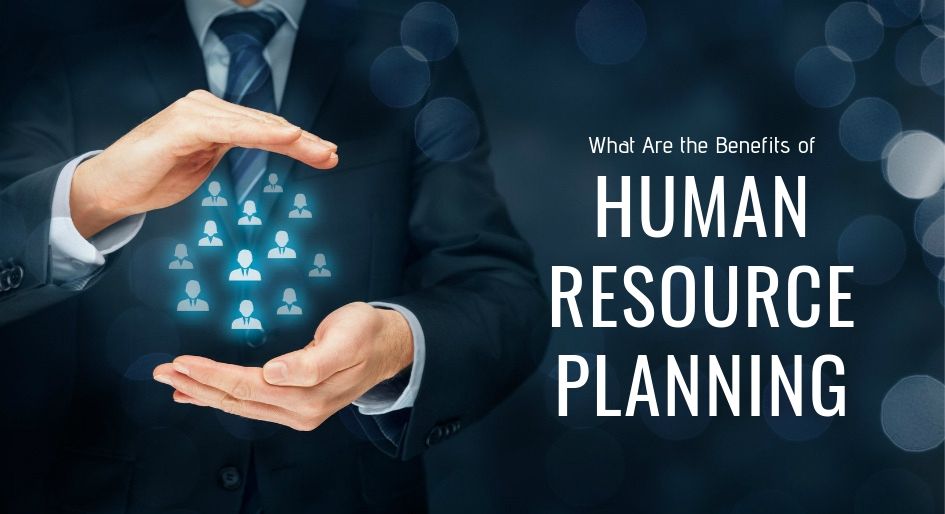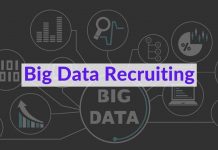It goes without saying that employees are the lifeblood of any business organization. Companies need employees who can get the job done. They need people who have the skills, background, and knowledge to perform their role and contribute to the success of the organization.
Thus, it is critical for every business to find the right people, from the frontlines to the executives, managers, and key leaders. Recruiting and hiring staff are two major goals of any organization. Thankfully, there is a dedicated department that does all the difficult stuff – the human resource team.
 The human resource (HR) department is responsible for the strategic planning and management of recruiting people, staffing, training, retention, and career development, among others. Because this department handles such a significant role, creating a human resource planning process is very important.
The human resource (HR) department is responsible for the strategic planning and management of recruiting people, staffing, training, retention, and career development, among others. Because this department handles such a significant role, creating a human resource planning process is very important.
A company that lacks human resources is likely to have difficulties developing and maintaining good relationships with its employees.
What is Human Resource Planning (HRP)
HR planning is a systematic planning process by which an organization determines how it will implement staffing to meet the demands of the business and the customers. It ensures that the company has the right people for the job while avoiding any shortage or surplus in manpower.
HR Planning covers all aspects of employee management, from hiring to training, and everything in between. More importantly, it gives a company the opportunity to properly address the concerns of their employees and make their job more satisfying.
Benefits of Human Resource Planning:
HR planning can be a long and tedious process. It involves a lot of work – brainstorming, debate, decision, analysis, and so much more – but it is one of the most important tasks that should help the HR team achieve their goals.
The following are the major benefits of human resource planning:
1. Retaining top talents:
Hiring is one thing. But retaining high-performing employees is another. According to a new study, 60% of workers have quit or considered quitting their jobs and it’s not because of how much they are paid, but how they are treated. HR planning encompasses talent retention. The thing is, businesses lose more money on attrition than on recruitment. So, the lower the attrition rate, the better for companies.
A high retention rate suggests that a company is doing wrong, especially in managing their employees. The HR department is in charge of creating programs that promote the welfare of its employees, such as giving them access to payday loans, health and wellness benefits, incentives, and much more.
In addition to providing competitive compensation, planning helps the HR team identify the factors that keep employees engaged. Employee engagement is a critical component of talent retention. Research shows that when employees feel valued within the organization, they are likely to stay.
2. Addressing the organization’s manpower needs:
HR departments are primarily responsible for recruitment and staffing. Recruiting and screening employees are time-consuming processes that require detailed attention. They involve many steps, from advertising or creating job posts, managing application process, screening applicants based on the qualifications set, interviewing prospective candidates, creating an offer and contract for successful applicants, on-boarding newly hired personnel, and training them.
With an effective planning process in place, the HR team can ensure that the business staffing needs are met. They can prepare ahead of time for any vacancies should an employee resigns (which can greatly affect productivity). Also, they can effectively handle the hiring process should there be an urgent need to ramp up and prevents potential problems that come along with attrition.
3. Ensuring that the right people are hired:
Another benefit of a recruitment plan is ensuring that only the most qualified individuals are hired to handle varying roles. Part of HR planning is determining the skill sets needed for a specific role and creating an interviewing process so that managers or interviewers can ask the right questions to their applicants. Companies that have an effective HR planning in place are prepared for their current and future staffing needs that ultimately result in business growth and expansion.
4. Training employees:
HR planning also involves creating training models and procedures. After finding the people who possess the right skill sets, the next thing that the HR department needs to do is to ensure that they are able to perform their roles based on the needs of the organization and 5. the customers. Training and onboarding are also necessary to teach new employees about the company rules and policies, its culture, ways of working, internal databases, tools and software, benefits and compensation, and other things they need to know.
HR planning also addresses the need for creating training programs for current employees. Regardless of qualification and background, most employees have some weakness in their workplace skills. A clearly defined training program allows the organization to strengthen the skills of its employees and equip them with the latest techniques and knowledge to perform their roles.
5. Managing employees:
While it is the role of managers and supervisors to ensure that their staff members are able to effectively perform their job, an effective HR planning process also incorporates employee management, particularly performance reviews and disciplinary procedures. Standardizing performance reviews, for example, guide managers in rating the performance of their subordinates and ensure that every employee is reviewed using the same set of metrics. Furthermore, standardizing disciplinary procedures sees to it that company rules are strictly followed and not adhering to them imply consequences.
6. Facilitating expansion programs:
These days, it is not uncommon for companies to undergo expansion activities. Growth is the goal of every startup. Due to the technological advances of the modern world, many companies have achieved rapid growth. While it’s a huge leap for an organization, there is no denying that it can be a difficult challenge for the HR department.
As a company increases in size, the demand for human resources. Whether it’s as simple as ramping up through massive hiring, or as complex as mergers and acquisitions, HR planning is crucial in facilitating company expansion programs needed to address the growing manpower needs.
7. Coping with change:
In any business organization, change is inevitable. Human resource planning is utilized to create appropriate measures to deal with change associated with varying factors, such as customer demands, business expansion, and political and economic conditions.
Another thing that HR has to cope with is the rapid change in technology. With such change, job and job requirements also change. Needless to say, technology has gotten its way into the workforce, taking over repetitive tasks via automation and the like. Through HR planning, an organization can forecast and meet the changing needs of manpower.
Human Resource Planning: Key Steps to Take
How is human resource planning done? Because HR work covers many aspects, from recruitment to hiring, training, and development, and coping with change, there are key steps to make to ensure that everything is addressed effectively.
1. Assessing human resource capacity:
One of the first steps in human resources planning is determining the current staffing needs of an organization. It is a crucial step in human resource management. Before taking steps to hire new employees or create an entirely new position or role, it is important for an organization to assess the talent they already have at their disposal.
The human resource department should be able to determine manpower capacity in several ways, such as by looking over past performance reviews and getting feedback from employees.
2. Determining HR Requirements:
It is the HR department’s goal to make sure that all the manpower needs of the organization are addressed, which means all job vacancies are filled, new roles are created as per organizational need, and current staffing is sufficient to meet the day to day production.
In addition to these, the HR team also needs to forecast manpower requirements in the next few months or years. They have to decide whether there’s a need to hire more people or stick to the current staff but improve their skills and productivity through training and development.
There should be more focus on managing the organization’s supply and demand for manpower.
Speaking of which, there are two things that have to be done during the planning phase: supply forecasting and demand forecasting.
Supply forecasting involves determining the resources available to meet the organization’s manpower needs. To do this, a skills inventory has to be done. This process involves knowing who among the employees are able to perform the job. The HR team also needs to look out external factors, such as potential hires.
Demand forecasting is determining future human resources needs. In this process, two things have to be figured out – the number of employees that need to be hired and the caliber of talent required to fill in the roles.
3. Integrating HR plans with overall corporate strategy:
After assessing the current HR capacity, it’s time to incorporate the plan with the overall strategy of the organization to get buy-in from the leaders and stakeholders. Strategic planning is done to figure out why the company is in business and what its long-term goals are.
Because human resource is part of everything – from product development to production, marketing, and so on, it is considered the biggest asset of a business organization. If the company does not hire the right talents to achieve its goals, the strategic plan will fail.
4. Creating a strategy to meet supply and demand forecasts:
After determining the organization’s staffing needs, the HR team needs to develop a strategy for acquiring, retaining, or strengthening manpower.
Many things have to be identified, such as the schedule of recruitment, how it should take place, who will be in charge, and how new hires will be onboarded.
5. Creating guidelines for recruitment and selection:
Talent development begins with recruitment. This involves posting a job on various platforms, such as the company site, talent or networking website, etc. After pooling qualified applicants, the selection process takes place.
Tools Needed for HR Planning:
Organizing human resource activities is easier when the right tools and techniques are used.
1. HR Analytics:
Workforce management involves making major decisions, which is better done with the help of data analytics. Things like budgeting and HR capacity forecasting involve studying trends and workforce history.
Insight into HR analytics is important for the team to calculate the cost and create processes for workforce management, such as talent development, talent acquisition, and workforce risks and gaps (skills shortage and turnover rates).
2. Employee Database:
To facilitate HR planning, the workforce profile has to be created. The profile should cover data on employees, turnover and recruitment, internal influence (things that could affect businesses processes like budget cuts, a change in business goal or direction, market pressure, etc.), current competencies, and competitor analysis.
3. Organizational Charts and Responsibility Assignments Matrix (RAM)
Organizational charts make it easier for the HR department to recruit staff in a project and determine important steps like how employees will be trained and when they should complete the project whereas RAM is utilized to describe work packages and the various roles within the company.
Human resource planning is an essential process that covers all aspects of workforce management. While it is not always a requirement, HR planning has many benefits to a business. It helps a company address its manpower needs, ensure that the right people are hired, retain top talents, manage employees and promote their productivity, facilitate expansion programs, and cope with change. HR planning should be done regularly, whether annually or biannually.
During the planning, the workforce capacity is assessed first and the HR requirements are identified. The plan then has to be integrated into the overall business strategy to ensure that leaders and stakeholders have buy-in and to allocate the funds needed to support HR initiatives and activities. A strategic HR plan helps a company achieve its goals by providing high-caliber manpower.
Conclusion:
HR planning can be a long, time-consuming process during which major decisions are made. To facilitate effective planning, there are tools and techniques that HR teams can use. These include HR data analytics (gathering data), employee database, and organizational charts and RAM.











































